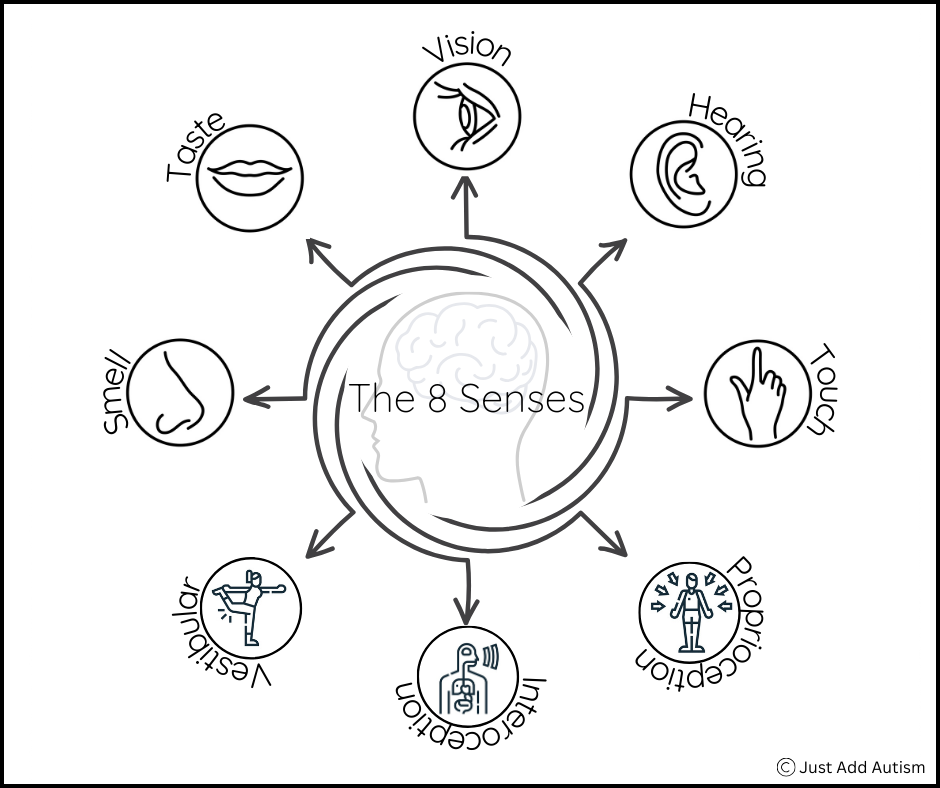Sensory integration plays an essential role in the development of every child, influencing how they perceive and interact with the world around them. From the moment they are born, children begin to explore their environment through their senses, laying the foundation for learning, communication, and overall development. In this blog post, I’ll provide a brief overview of the concept of sensory integration, its significance in child development, and strategies for supporting children who may experience challenges in this area.
What is Sensory Integration?
Sensory integration refers to the brain’s ability to organize and interpret information received through the senses, including sight, sound, touch, taste, smell, vestibular, proprioception, and Interoception. This process allows us to make sense of our surroundings, regulate our responses, and engage in purposeful activities. When sensory integration functions smoothly, it facilitates learning, social interactions, and motor skills development.

For some children however, sensory integration may pose challenges. They may experience difficulties in processing sensory input, leading to sensory processing disorder (SPD). Children with SPD may be oversensitive or undersensitive to sensory stimuli, resulting in heightened or diminished responses to sensory experiences. These challenges can manifest in various ways, such as sensory-seeking behaviors, sensory aversions, or difficulties with attention and regulation.
Importance of Sensory Integration in Child Development:
Sensory integration is fundamental to every aspect of child development, influencing cognitive, emotional, social, and physical growth. Here are some ways in which sensory integration contributes to a child’s overall development:

- Cognitive Development: Sensory experiences provide the building blocks for cognitive skills such as attention, memory, problem-solving, and language development. Children learn about their environment through exploration and sensory input, which helps them make connections and understand concepts.
- Emotional Regulation: Sensory integration plays a crucial role in emotional regulation, helping children manage their feelings and responses to stimuli. When sensory input is processed effectively, children can self-regulate and cope with stressors more effectively.
- Social Skills: Sensory experiences shape social interactions by influencing how children perceive and respond to others. For instance, being sensitive to social cues and body language relies on effective sensory processing. Difficulties in sensory integration may impact a child’s ability to engage in social interactions and develop friendships.
- Motor Skills Development: Sensory input informs motor planning and coordination, laying the foundation for gross motor and fine motor skills development. Activities that involve movement, tactile exploration, and proprioceptive input promote motor skills mastery and body awareness.
Supporting Children with Sensory Integration Challenges:
Early identification and intervention are crucial for children experiencing difficulties with sensory integration. Here are some strategies for supporting children in this area:
- Provide a Sensory-Friendly Environment: Create a supportive environment that accommodates children’s sensory needs. Consider factors such as lighting, noise levels, textures, and seating arrangements to minimize sensory overload and promote comfort.

- Offer Sensory Activities: Incorporate sensory-rich activities into daily routines to provide opportunities for exploration and regulation. Activities such as messy play, sensory bins, swinging, and tactile experiences can help children regulate their sensory input and develop coping strategies.
- Use Visual Supports: Visual supports such as visual schedules, timers, and picture cues can help children anticipate and understand sensory experiences, reducing anxiety and promoting participation.
- Encourage Self-Regulation Techniques: Teach children self-regulation techniques such as deep breathing, mindfulness exercises, and sensory breaks to help them manage sensory overload and maintain emotional equilibrium.
Conclusion:
Sensory integration plays a fundamental role in child development, influencing cognitive, emotional, social, and physical growth. Understanding the complexities of sensory processing and providing appropriate support are essential for fostering children’s well-being and success. By creating sensory-friendly environments, offering sensory activities, and teaching self-regulation techniques, we can empower children to navigate the world with confidence and resilience, regardless of their sensory challenges.
Sensory integration and brain development fascinate me. Nearly every decision I make in my classroom is made with these two developmental areas in mind. This is a topic I will write about often.


